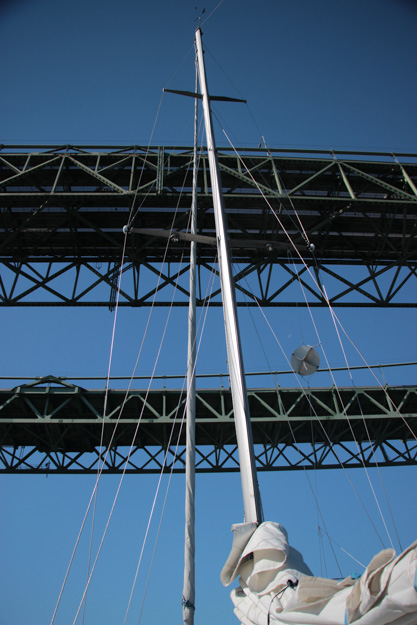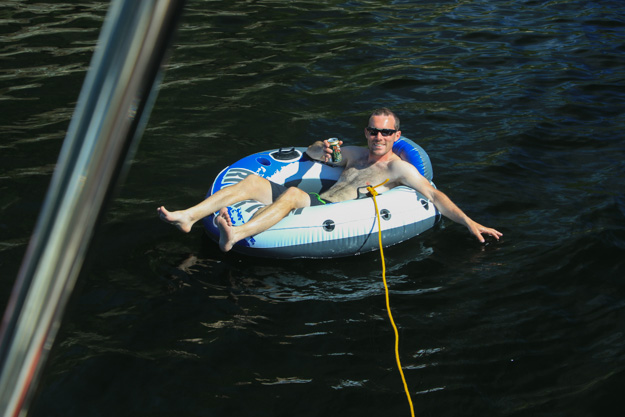A lot of cruising blogs seem to only have nice things to say about the places they visited. It gives the impression that everything is always sunshine and rainbows for them – which if true is great, but for us everything isn’t always sunshine and rainbows. We try not to be too cynical, but there are definitely a few places where if we had known what it was like, we probably wouldn’t have gone there. We’d rather know about the bad things along with the good, rather than be in the dark. Although everyone’s experience is different – what was bad for us might be great to someone else.
South Puget Sound – from the Tacoma Narrows to Olympia and adjacent inlets – is an area some guides and reports we’d read say is a wonderful cruising destination that is too often forgotten by the many boaters who primarily travel north (to the San Juans and BC). For us though, cruising means sailing, and in the South Sound we had the least sailing we’ve had all summer.

No Wind Makes For Sad Sailors
We really enjoyed visiting the city of Olympia, but it would’ve been much easier and quicker to drive there. We did close to 30 miles of motoring each way, and south of Gig Harbor there was basically no wind for four out of the five days we were there. Completely flat water without a ripple in sight, and less than 2 knots registering on the wind meter – morning, afternoon, and evening. One day we got 4-5 knots for about 20 minutes, and raised sails, but it quickly died back to zero.
August often has little wind in Puget Sound – so perhaps the South Sound is a good destination only in the shoulder seasons (fall and spring). But even though Puget Sound was getting 10 knots, according to the West Point NOAA station and Washington State ferry readings, we were getting none. And as soon as we left the South Sound and got to Gig Harbor, we had wind again.

Passing under the Tacoma Narrows bridge








